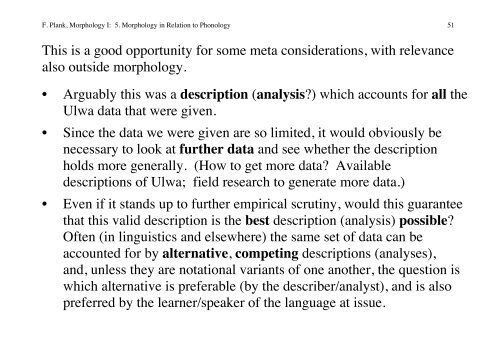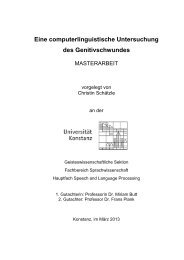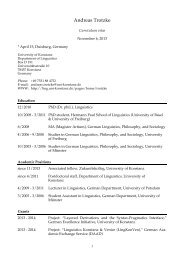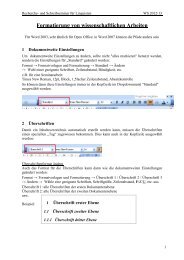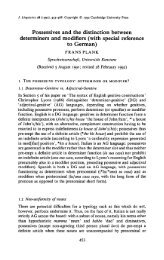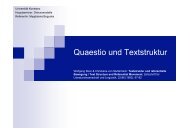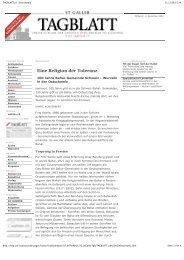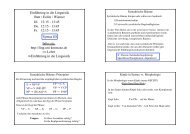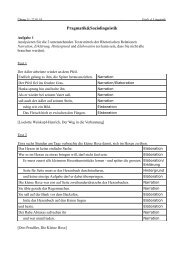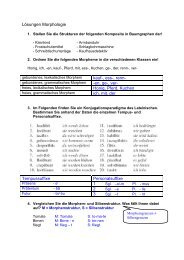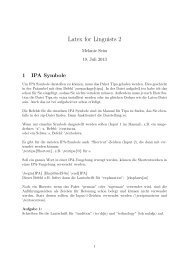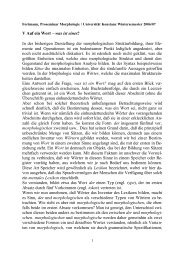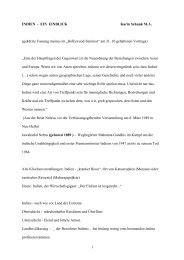5. Morphology in Relation to Phonology
5. Morphology in Relation to Phonology
5. Morphology in Relation to Phonology
Create successful ePaper yourself
Turn your PDF publications into a flip-book with our unique Google optimized e-Paper software.
F. Plank, <strong>Morphology</strong> I: <strong>5.</strong> <strong>Morphology</strong> <strong>in</strong> <strong>Relation</strong> <strong>to</strong> <strong>Phonology</strong> 51<br />
This is a good opportunity for some meta considerations, with relevance<br />
also outside morphology.<br />
• Arguably this was a description (analysis?) which accounts for all the<br />
Ulwa data that were given.<br />
• S<strong>in</strong>ce the data we were given are so limited, it would obviously be<br />
necessary <strong>to</strong> look at further data and see whether the description<br />
holds more generally. (How <strong>to</strong> get more data? Available<br />
descriptions of Ulwa; field research <strong>to</strong> generate more data.)<br />
• Even if it stands up <strong>to</strong> further empirical scrut<strong>in</strong>y, would this guarantee<br />
that this valid description is the best description (analysis) possible?<br />
Often (<strong>in</strong> l<strong>in</strong>guistics and elsewhere) the same set of data can be<br />
accounted for by alternative, compet<strong>in</strong>g descriptions (analyses),<br />
and, unless they are notational variants of one another, the question is<br />
which alternative is preferable (by the describer/analyst), and is also<br />
preferred by the learner/speaker of the language at issue.


